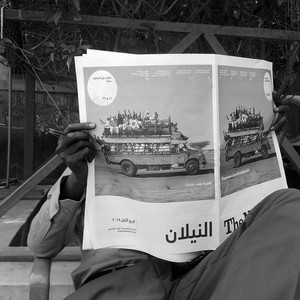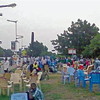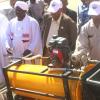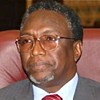On the move, still
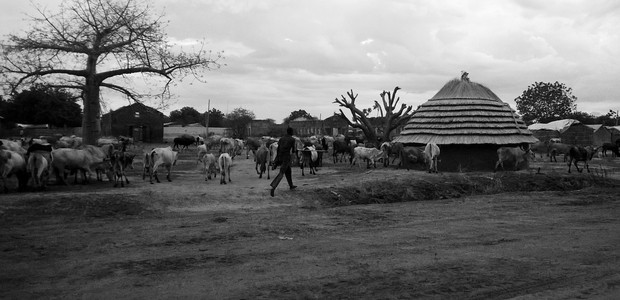
For thousands of years what is now Sudan has been a crossroads for people migrating from north to south or west to east. Historical routes include those of pastoralists roaming within Sudan and across its borders, and migrants seeking a better quality of life or to flee violence.
Contemporary Sudanese society bears the hallmarks of these historical movements. Members of the Fallata tribe, for example, who arrived from northern and western Africa, are now found across the country. A number of Sufi orders that originated in Moroccan cities took root and still flourish in Sudan. Others also settled, including Copts, Greeks, Syrians, and Armenians.
And while Sudan is famed for conflicts like Darfur, which forced many to flee their homes, less well known is the fact that Sudan is among the world’s leading hosts of refugees, with people coming from countries like South Sudan, Ethiopia, and Eritrea.
Migration in what is today Sudan dates back to the beginning of mankind. Nearby Lake Turkana area is regarded by many anthropologists as the crib of humanity, and some historians describe the first civilisations moving from inner Africa up the Nile to Egypt. Population exchanges were common even back in Pharaonic Egypt, when Egyptian rulers raided Sudan for slaves, and there were periods when ancient kings and queens from Sudan ruled Egypt.
Before the rise of Islam in the 630s, some Arab groups migrated to the region, but Christian kingdoms remained in Sudan until the 1500s, far later than in neighbouring countries. From then until the nineteenth century, the slave trade, mining in the eastern desert, pilgrimages to Mecca, as well as burgeoning trade with India, all brought Arabs, western Africans, and many others to Sudan.
People on the move shaped modern Sudan, beginning in 1821 with the bloody conquest by the Turkish-Egyptian forces. The subsequent colonial regime of the Turkiya raided the country for slaves and concentrated power in the newly founded capital of Khartoum, setting the scene for centuries of rural-urban migration.
Urban settlements swelled in size and importance during the Anglo-Egyptian Condominium that ruled Sudan from 1898 to 1955. Colonial powers focused development on a few cities in the north and a large-scale irrigation scheme in the Gezira area for cotton production. In 1923, the scheme attracted many workers. The town of El-Hassaheisa, for example, where many of the immigrants working in the agricultural project settled, included people from 25 villages in west Sudan and 52 from west Africa, with many arriving from Chad and Nigeria.
After independence in 1956, development remained largely urban, triggering renewed labour migration from the peripheries to the cities, mainly metropolitan Khartoum. Figures tell the bigger story: the capital’s population was a quarter of a million in 1956 but swelled twentyfold to around five million in 2008.
This search for greener pastures is ongoing. Sudan’s economy suffered the loss of oil income that followed South Sudan’s independence in 2011, and many seek better prospects overseas, settling in Europe, the US, Australia, or the Middle East. The Secretary-General of Immigrant Affairs Haj Majid Siwar has said that last year a total of 67,000 Sudanese people moved away. And some are desperate: official Sudanese figures show that more than 100 Sudanese drowned last year in the Mediterranean trying to make their way to Europe.
Ibtisam Satti, Vice Dean of the Economics Faculty at Khartoum University said that Saudi Arabia receives most migrant labour, accounting for 91 percent of people leaving in the past five years while Qatar is another leading destination. Remittances from overseas workers are a key plank of the Sudanese economy: World Bank data showed payments peaked in 2008 at more than US$ 3 billion, mainly from the Gulf.
Social researcher Hind Yahya blamed Sudan’s economic malaise for the rising number of Sudanese moving abroad. “Elites in all jobs, including doctors, teachers, and engineers, emigrate now,” she said. “Not because they do not like Sudan, but because they cannot secure the basics here.”
The brain drain, which started in the 1970s, continues today. University professors are the most striking example: Some 1,002 university professors left Sudan in 2013, up from 21 in 2008.
While many Sudanese move abroad, rural dwellers move to urban hubs which offer more services. Migration from the countryside to the capital Khartoum or other large cities is caused by the lack of rural development and the inability of the young people to achieve their ambitions in their home areas,” social researcher Hind Yahya said.
As well moving for economic reasons, people have been forced from their homes by conflict. Following more than 12 years of violence in Darfur, some 370,000 Darfuris live as refugees in camps in eastern Chad. With the independence of South Sudan, many Sudanese who fled to the former southern region became refugees. The United Nations expects this group to reach 245,500 in 2015 as people flee conflict areas like South Kordofan and the Blue Nile states, where the Sudan People’s Liberation Movement-North (SPLM-N) took up arms against the Sudanese government in 2011.
Salva Jima Alkary is one of them. She walked for more than a week from her village to the South Sudan border in search of safety. “We came from an area called Werni, we left there because of the continuous war, arrests, and hunger that people face,” she said.
Many more Sudanese have been forced to leave their homes, but have not been willing or able to cross international borders. It is estimated that 3.1 million people have been displaced within Sudan, of a total population of 37 million. In 2011, Sudan had the most internally displaced people in the world after Colombia.
Meanwhile, many Darfuris fleeing conflict end up in camps scattered around Darfur. And South Darfur’s capital Nyala, has rapidly grown into Sudan’s second most populated city. Others go to Khartoum. Among these was Omar Saleh, who was forced to flee Darfur, moving with his sons to the capital in 2005. “The war halted services in our region,” he explained, adding that they want to return home as soon as basic services are available.
Sudan is one of the countries that hosts the most refugees in the world as people come from South Sudan, Ethiopia, and Eritrea and beyond. There are four million foreigners in the country, around one in every ten citizens, according to a paper published this year by Khalil Abdullah, a University of Niles professor.
Some of these fled violence, including more than 150,000 South Sudanese who fled after fighting broke out in December 2013. Others seek a better quality of life, including Tawfik Munir, a migrant from Ethiopia who now works as a reporter: “My country did not provide me with a job to ensure a decent living.”
Sudan has a third important group of people on the move. From time immemorial, pastoralists have roamed Sudan, moving seasonally to new pastures with their herds of camel, sheep, or cattle.
A 2012 study paper by researchers at Tuft University in Boston showed pastoralism’s role in the Sudanese economy, explaining: “Livestock is by value the largest sub-sector of Sudan’s domestic economy, larger even than petroleum.”
But these pastoralist groups have been hard hit by modern social and environmental challenges, such as access to water and pastures or legislation on land ownership. This has given rise to conflicts between nomads, peasants, and large landowners, especially in Darfur. This is one sign that Sudan’s traditional migrants are facing a host of specifically 21st century problems.
